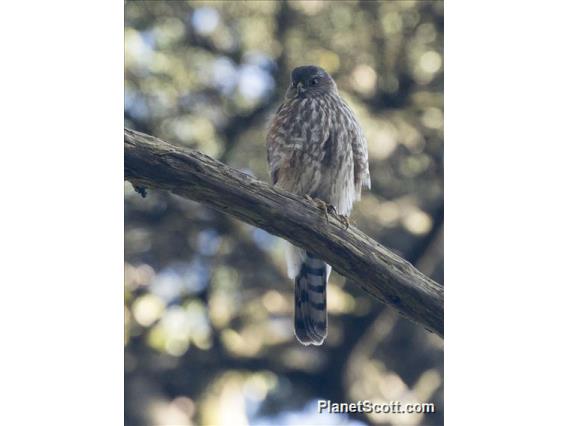Sharp-shinned Hawk (Accipiter striatus)

Sharp-shinned Hawk (Accipiter striatus)
×


Sharp-shinned Hawk (Accipiter striatus)
About Sharp-shinned Hawk (Accipiter striatus)
- Kingdom: Animals
- Phylum: Chordates
- Class: Birds
- Order: Hawks, Eagles, Kites, and Allies
- Family: Hawks, Eagles, and Kites
The sharp-shinned hawk or northern sharp-shinned hawk, commonly known as a sharpie, is a small hawk, with males being the smallest hawks in the United States and Canada, but with the species averaging larger than some Neotropical species, such as the tiny hawk. The taxonomy is far from resolved, with some authorities considering the southern taxa to represent three separate species: white-breasted hawk, plain-breasted hawk, and rufous-thighed hawk. The American Ornithological Society and some other checklists keep all four species conspecific.
Source: Wikipedia
Trips
Visits
-
-
2006-10-08
Marin Headlands, United States of America -
-
2007-04-02
Glen Canyon Park, United States of America -
2007-04-07
Torrey Pines State Reserve, United States of America -
-
2008-10-07
Bernal Hill, United States of America -
2011-07-25
Praia do Forte, Brazil -
2014-01-22
El Aceitillar, Dominican Republic -
2014-02-20
Mission - My New Backyard, United States of AmericaOn a pole at the corner of 25th and Bryant. -
2014-12-28
Glen Canyon Park, United States of America -
-
2016-01-24
Heron's Head Park, United States of America -
-
-
-
-
-
-
-
-
-
-




